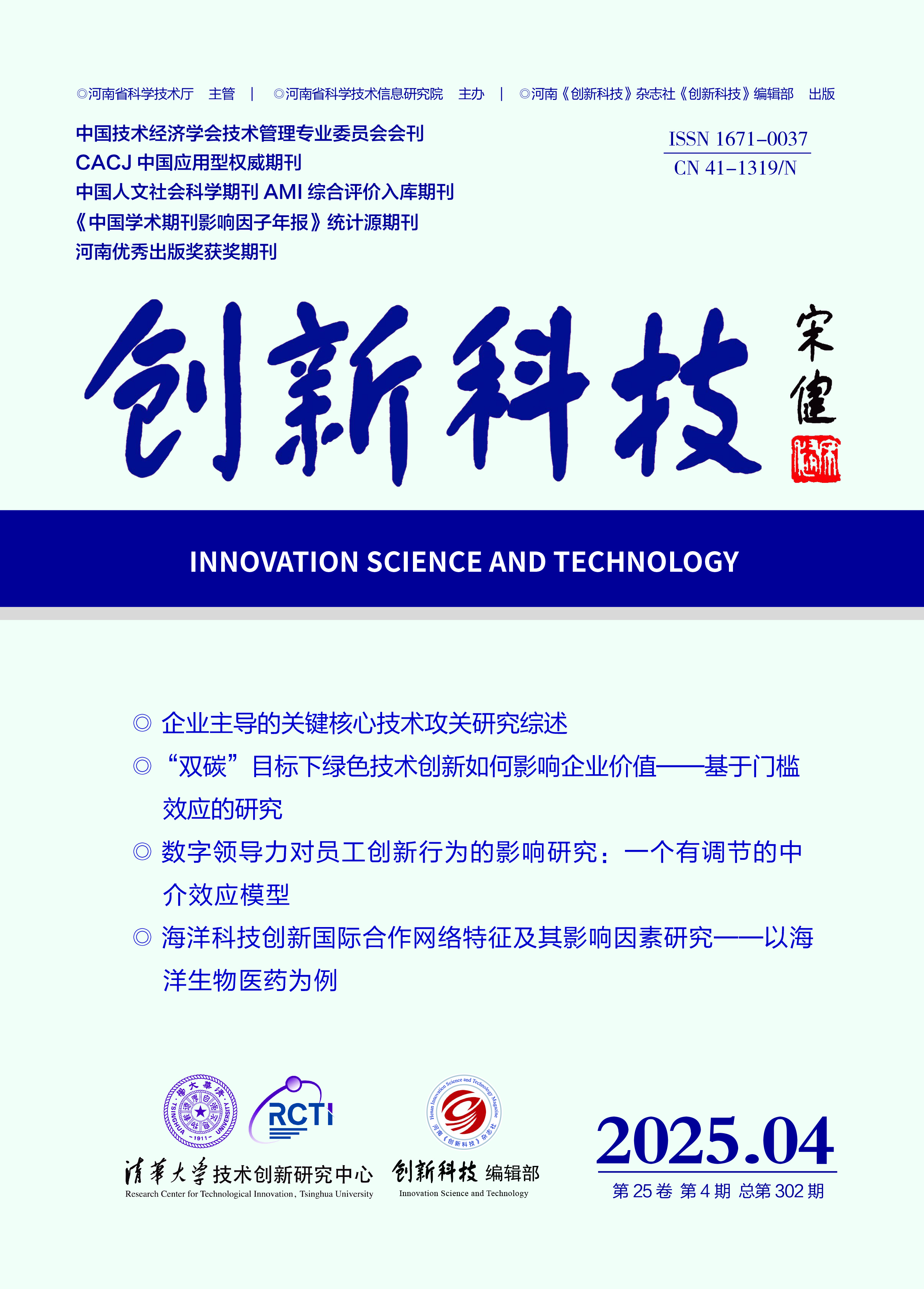INNOVATION SCIENCE AND TECHNOLOGY
Quick Search

All publication are peer-review
Peer review will take the from of double-blind review Judge objectively and impartially
There is no conflict of interest for the reviewer
Review articles shall be kept strictly confidential prior to publication
Theories and Methods of Science of Science
Research on the Dynamic Evolution of Technical Capability and Service Capability of Service-oriented Manufacture
Li Jinghua, Jiang Zhongshuang, Lin Jiarong, Zhu Jiantao
(School of Business Administration, Zhejiang Gongshang University, Hangzhou 310018, China)
Abstract: Service-oriented manufacturing (servitization) is one of the most important ways for manufacturers to distinguish themselves and gain a competitive advantage. However, companies in China find it difficult to balance the development of service-related capabilities and technology-related capabilities, which is a common phenomenon for Chinese manufacturers with a limited foundation in both manufacturing and services. To find the most effective way for manufacturers to implement a servitization strategy, the system dynamics method was adopted to construct a system causal model and a system process model of enterprise technology capability and service capability. Based on the interviews with China's most famous air separation equipment group, Hangyang, the Analytic Hierarchy Process was used to conduct system dynamics simulation analysis and explore the dynamic interactions between the dual capabilities in depth. Hangyang's transformation from a product-oriented busi⁃ ness model to a service-oriented business model, offering a range of services from basic to ad⁃ vanced, made it an ideal candidate for constructing the dynamics simulation analysis model. The conclusions of this study are as follows: In the context of industry competition, manufac⁃ turing enterprises are in the process of promoting the transformation to service-oriented manu⁃ facturing: ①As technical knowledge and service knowledge accumulate, technical capabilities and service capabilities show a general trend of marginal increase. ②The interaction of techni⁃ cal capabilities and service capabilities facilitates the further integration of enterprise capabili⁃ ties and promotes the construction and rapid improvement of service-oriented manufacturing ca⁃ pability. ③With the continuous development of servitization capability, the advantages of ser⁃ vice businesses focusing on customer demand information and market knowledge gradually emerge. Service businesses relying on products gradually replace product businesses and be⁃ come the primary source of corporate profits.
Besides, there are also some practical implications. First, as the operation time of the enter⁃ prise accumulates, the focus shifts from technical capabilities to service capability construction activities. After the service capability matures and is sufficient to nurture intermediate and ad⁃ vanced service businesses, the focus should shift to both technical and service capabilities. Sec⁃ ond, enterprises should prioritize developing and accumulating new service capabilities by estab⁃ lishing independent service departments, recruiting service-oriented talents skilled in service business management and operation, or improving employees' service skills through training. Last but not least, manufacturing enterprises opting for service transformation not only need to design new service businesses but also need to optimize and transform existing product busi⁃ nesses to make them more suitable for offering service businesses. This study enriches servitization research by exploring the dynamic evolution of enter⁃ prises' technical capabilities and service capabilities, which provides a strategic reference for service-oriented manufacturers to structure and develop their capabilities. Additionally, this study proposes the processes of the integration of technical capabilities and service capabilities, which supports the complementary view of the dual business model transformation for manufac⁃ turing enterprises.
Key words: service-oriented manufacture; manufacturing servitization; technical capability; service capability; system dynamics